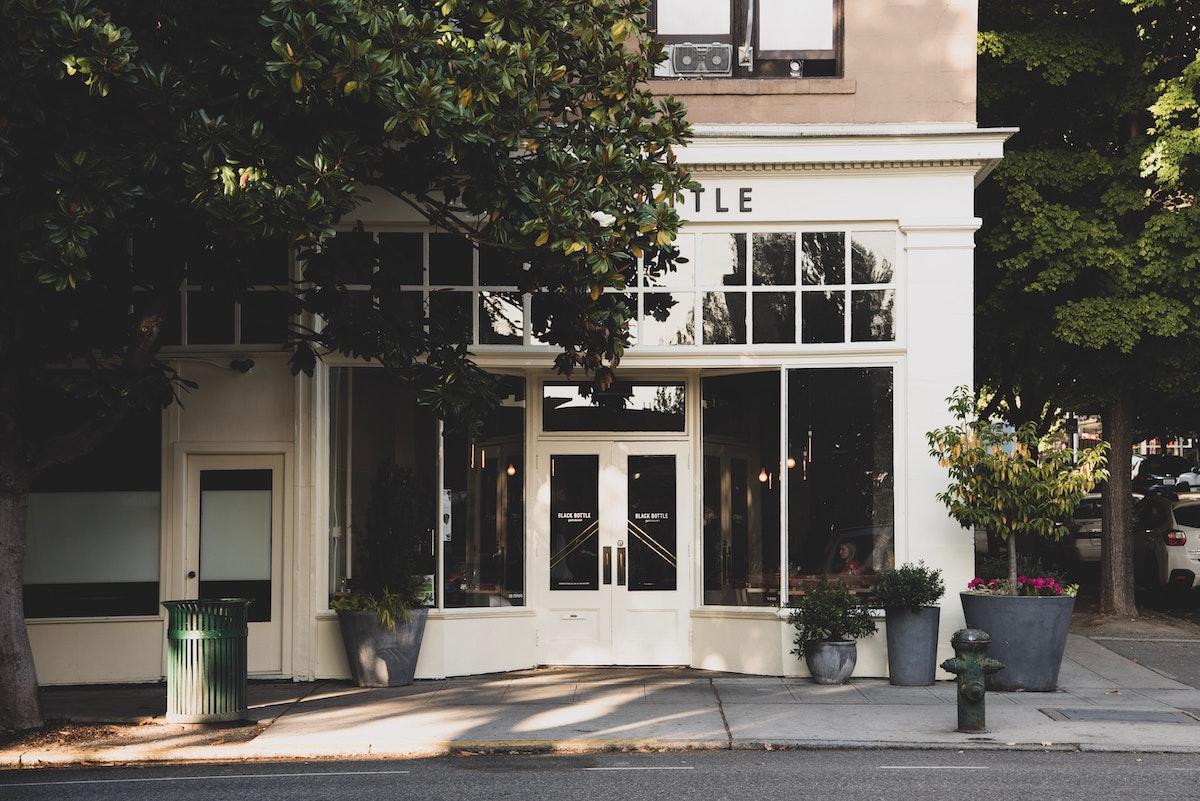Commercial Leasing 101: A beginner’s guide to commercial leases

If you want to start a brick-and-mortar business, you’ll likely enter into a commercial lease at some point. While it may seem obvious, every commercial lease has its nuances and it’s best to enter into the situation armed with the most knowledge you can have. Below, we’ll outline the different types of commercial leases, how they work, tips for negotiating, and more. If you’re hoping to sign your own commercial lease one day, keep reading.
What is a commercial lease?
A commercial lease is an agreement between a landlord and a business owner over a commercial piece of real estate. It works similarly to a residential lease. The tenant pays the lease to use the building for their office, warehouse, or any business while the landlord owns the building.
There are many types of commercial leases, which we’ll go into later. However, they all have one goal: allowing business owners to have a piece of physical property where they can bring together their team, increase the opportunity for sales, and and conduct their business as they see fit.
How Do Commercial Leases Work?
Getting a commercial lease is highly similar to obtaining a residential one. However, if you’re curious about how the process works, these are the usual steps:
- Pick out your commercial lease property. Connecting with a commercial real estate broker in your area is a good start—they’ll be able to help you find and secure the perfect property for your business.
- Once you find the building, discover which type of commercial lease the landlord wants and make sure it works with your company goals.
- Negotiate the lease. We’ve got great tips and tricks for that process later on in this blog.
- Sign the lease and start renting!
What Are the Different Commercial Leases?
Here is a breakdown of the different types of commercial leases. Depending on your budget and needs for your property, you’ll want to find a lease that works best for your business. We point out in each case what lease works best for which type of business.
Net Lease
The most common type of commercial lease used in the market, a net lease is an agreement where the tenant covers the base rent on top of other costs, like utilities and maintenance. However, there are several types of net leases to consider.
- Single net lease: You pay the rent on top of the property taxes. The single net lease is excellent for businesses that need a cheaper lease.
- Double net lease: With a double net lease, you must pay the rent, property taxes, and insurance. However, your landlord must cover utilities, maintenance, and everything else. If you have more wiggle room in your budget but would still like help from your landlord, this is a great option.
- Triple net lease: You handle a majority of the costs as the tenant. The triple net lease covers rent, maintenance, insurance, taxes, utilities, and repairs. Your landlord covers little, so it’s a riskier lease to get as a tenant. But, you might gain access to higher-quality buildings thanks to this risk. You also have more control of managing repairs and updates to your building, instead of waiting on your landlord to take care of it.
- Bondable net lease: The type of lease is just like the triple net lease, except you also have to cover risks. For example, suppose there’s an environmental disaster, like a fire. In that case, you’ll have to cover expenses if the building burns to the ground. We don’t recommend finding this type of lease unless you can cover these costs without a problem and your dream real estate property only uses this type of lease.
Gross Lease
Consider a gross lease if you’re expecting hefty fees for the property you’re leasing. Depending on your lease type, your landlord can cover some of those fees for you. Here are the different types:
- Full-service lease: You’ll pay a fixed rent every month, and outside that fixed rent, your landlord covers all the additional expenses. That includes insurance, utilities, taxes, fees, and more. This lease can save you money, but you have less control over utilities and other manageable aspects of the building.
- Modified lease : Instead of your landlord paying for all the fees, the two of you agree on which expenses you pay and which your landlord pays. Many landlords like to use this lease as it’s more even for them and the tenant. You’ll be able to find more real estate options if you’re willing to sign this type of lease and cover more of the cost.
Percentage Lease
With the percentage lease you agree with your landlord on a base rent, which will be a small price. However, you’ll also pay an additional percentage based on your business’s gross income. For example, you could pay your landlord 5% of your business profits as your lease payment. With this lease, you and your landlord benefit from your business profiting. This is an excellent lease choice if your landlord will help with promotion and ensure your commercial lease remains in tip-top shape. However, the more money you make, the more you have to pay your landlord.
Lease-to-own
A newer product on the commercial leasing market, lease-to-own allows you to lease your dream commercial real estate while using the money you pay for rent to invest back into your future. With lease-to-own, you pay rent just like you would on any other lease, only now, a percentage of your rent goes towards a down payment credit to purchasing the property after your five year lease is up.
At withco, we offer lease-to-own partnerships with small business owners so that they can get all the benefits of owning commercial property without having to front the cash for hefty down payment. It’s a great option if you want to secure your property for the long term, and never worry about getting displaced by rent hikes or change in property ownership ever again.
Common Commercial Lease Terms
If you are hoping to get a commercial lease in the future but haven’t signed one before, there are some terms you may not be familiar with. To help in your future negotiations, here are some definitions you should know.
- Build-out: This term refers to any work or renovations the landlord needs to do to the property. If you require renovations before moving into your real estate property, you must have it in writing on the lease. Otherwise, it may not happen. The build-out section of your lease should be where you and the landlord list the agreed upon build-out deliverables.
- Building class: In commercial leases, the landlord rates the properties into three different classes: class A, B, and C. What are the differences? Class A refers to newer buildings in high-traffic areas with better amenities. However, they are more expensive. Class B properties are older and potentially aren’t in as good of a place for business sales. Class C buildings need improvements and aren’t as high-quality. It’s essential to decide which type of class you’re hunting for before signing a lease. Ask yourself if you’re willing to spend more money to get a Class A building, or if you’re willing to deal with renovations to find a cheaper lease.
- Non-compete clause: If you’re leasing an office or storefront in a larger building with many other businesses, it’s essential to have a non-compete clause built into your lease. This requires that your landlord may not lease out another property to a competitor next to yours.
Commercial Lease Negotiations
When you’re hoping to sign a commercial lease in the future, it’s essential to know how to negotiate your needs. Your lease may not fit all your business needs from the start, so you need to speak with your future landlord to craft it for your business. Click here to read our complete guide on negotiating your commercial lease .
Want to upgrade to a lease-to-own partnership?

Stu Little
Stu Little is the Head of Investments at withco and possesses a deep knowledge of commercial real estate from his former experience at Rubenstein Partners and Capital Partners. He holds a B.S. in Economics from The Wharton School of Business.



